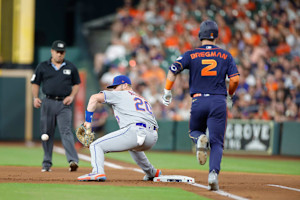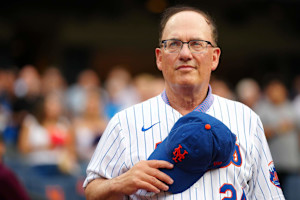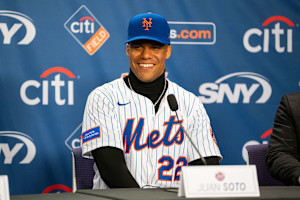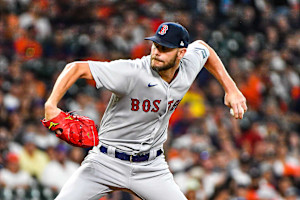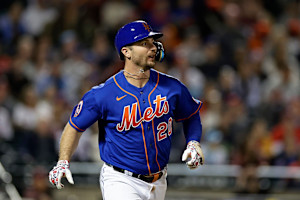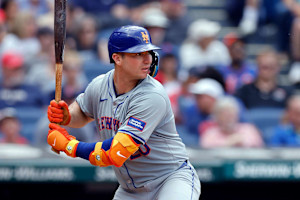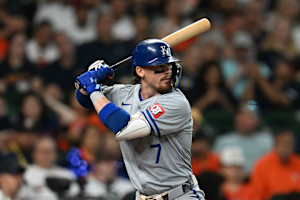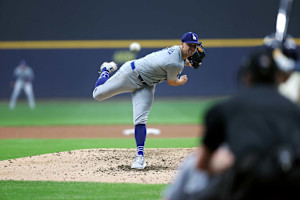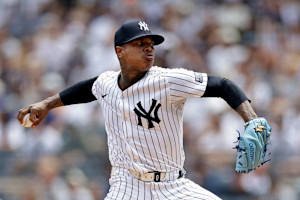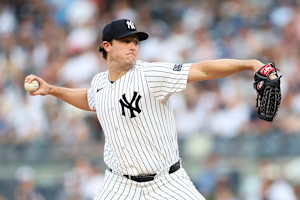Mets' Pete Alonso Is Paying the Price for MLB's New Home Run Reality
January 29, 2025
Whatever Pete Alonso expected from his first foray into MLB's free-agent market, it probably wasn't a near-total shunning.
Of the reasons why this is happening, here's one that deserves a closer look: The thing Alonso is good at is, unfortunately for him, something everyone else is good at, too.
It's already clear that Alonso will not get his dream payday. As Bob Nightengale of USA Today reported in June 2024, that payday was a contract worth upwards of $200 million.
Heck, the 30-year-old first baseman will be lucky if he gets even halfway to the $158 million extension offer that the New York Mets reportedly made him in 2023.
According to Joel Sherman and Dan Martin of the New York Post, the Mets last offered Alonso a three-year contract worth $68-70 million. He and his agent, Scott Boras, rejected it, apparently prompting the Mets to walk away.
Per his comments from last weekend, it doesn't sound like Mets owner Steve Cohen is champing at the bit to return to the table.
SNY @SNYtv"I don't like the negotiations. I don't like what's been presented to us."<br><br>Steve Cohen talks about the Mets' negotiations with Pete Alonso and the possibility of the Mets moving forward without him: <br><br>➡️ Tri-State <a href="https://twitter.com/Cadillac?ref_src=twsrc%5Etfw">@Cadillac</a> <a href="https://t.co/wPqzE47YdL">pic.twitter.com/wPqzE47YdL</a>
Alonso's prospects outside Queens don't look much better. Notably, Andy Martino of SNY doesn't think he and Boras can get the Toronto Blue Jays to match the Mets' last offer.
To be clear, this is the same Pete Alonso whose claim to fame is a National League-leading 226 home runs since 2019. And last anyone checked, home runs haven't gone out of style.
But for Alonso, this is also the problem.
When Sluggers Ruled the World
If there was an ideal time for Alonso to hit free agency, it would have been amid an era when home runs were rare and home run hitters were valued accordingly.
The 1920s, basically.
It was a decade when the long ball suddenly became much more common, yet it was still a novelty because of how few hitters could actually hit the ball over the fence with any regularity.
And now for a name-drop that you probably suspected was coming: Babe Ruth.
When Ruth hit 54 homers in 1920, he accounted for 8.6 percent of all the homers hit that year. It's the highest percentage ever by a seasonal home run leader, though he came close to matching it when his 60 homers in 1927 took up a 6.5 percent share of the market.
As for how things have changed over the last 100-odd years, take a look:
What this shows is that leading home run hitters don't dominate the marketplace like they used to. Whether we're talking about the top one, the top 10 or even the top 20, the trendlines have all gone south and have basically flatlined.
For perspective, let's consider Aaron Judge.
He hit four more home runs in 2024 than Ruth hit in 1920, yet his total was just 1.1 percent of the 5,453 home runs hit last season. To match the 8.6 percent share Ruth had in 1920, Judge would have had to go deep 469 times.
The Long Ball Has Been Democratized
For Alonso, the problem isn't that there are more players like him.
Though he hit "only" 34 home runs in 2024, his sheer power potential is still north of the 40-homer threshold. That same threshold is one four hitters cleared in 2024, a far cry from the record 17 who did so in 1996.
Yet here's the funny thing: There were more home runs on a rate basis in 2024 than there were in 1996.
Whereas there's been a dropoff in 30- and 40-homer hitters since the 30-team era began in 1998, instances of hitters getting to 20 or just 10 have increased. This is particularly true of the 10-homer crowd, which has grown from 178 in 1998 to 221 in 2024.
In fairness to Alonso, he can rightfully claim that not all home runs are created equal. He tends to make his count, hitting 19 more with men on base than anyone else since 2019.
As a general rule, though, it's more feasible than ever to lose a top-tier home run hitter and simply replace him in the aggregate. And this appears to be the Mets' plan.
Granted, a big reason why Alonso's absence doesn't loom as large is because the Mets dropped $765 million on Juan Soto after a year in which had a .981 OPS and 41 homers. But for his part, Cohen alluded to feeling "really good about the young players who are coming through our system who have the ability to play at the Major League level."
This could be a reference to 25-year-old third baseman Brett Baty, who was known for his power as a prospect. The Mets also have big plans for 22-year-old Luisangel Acuña, who has 20-homer upside in his own right.
It is conceivable that Baty and Acuña alone could replace Alonso's home runs, which is to say nothing of what they stand to gain from their new center fielder. That is Jose Siri, who hit as many homers on his own last season (18) as the Mets got from all their center fielders.
Alonso Has Other Problems, Too
It is, of course, still possible for guys who hit home runs in bunches to earn dollars in bunches.
Soto is a good example, as are the top two home run hitters in 2024. Judge and Shohei Ohtani are worth over $1 billion under their current contracts.
Yet, to consider these guys solely as power hitters is obviously to sell them short.
Soto and Judge are both elite OBP merchants, and the latter is either a good right fielder or an adequate center fielder. Ohtani, meanwhile, is Ohtani. As in, a guy who was MLB's greatest-ever two-way player before he was its first 50-50 hitter.
Meanwhile, Alonso has never been an especially difficult out, and the last two seasons have seen him become an average-ish OBP guy and subpar in the batting average department. He's also always had "DH" written all over him, as his minus-24 Outs Above Average as a first baseman can attest.
It is partly for these reasons that Alonso does not compare to the two highest-paid true first basemen in MLB: Freddie Freeman ($162 million) and Matt Olson ($168 million). Both exited their 20s with more to show for their careers than Alonso.
According to Baseball Reference, the best historical comps for Alonso are Richie Sexson, Cecil Fielder, Chris Davis and Mark McGwire. Here's how valuable they were after turning 30:
- Sexson: 5.4 WAR
- Fielder: 3.3 WAR
- Davis: -2.7 WAR
- McGwire: 35.7 WAR
In summation: flamed out, flamed out, flamed out, steroids.
As disheartening as it is to watch the Mets and Alonso breaking up in real-time, Cohen isn't wrong to be driving a hard bargain. And besides, the market has spoken.
Via the Houston Astros, the market deemed fellow first baseman Christian Walker, who projects to be better than Alonso in 2025, to only be worth $60 million over three years. Anthony Santander otherwise has a similar power-first profile, and his five-year, $92.5 million deal with Toronto has deferrals that lower its real value to $68.6 million.
So, the offer that Alonso and Boras rejected? It was spot-on.
At this point, Alonso's best move may be to bet on himself with a one-year deal and hope to rebuild value. It could only help if he shows he's still a 40- or 50-homer guy and not a mere 30-homer guy.
Yet even if he does, the ship for his $200 million payday has likely sailed for good. For that matter, you have to wonder if it was ever really in the harbor to begin with.
Stats courtesy of Baseball Reference, FanGraphs and Baseball Savant.
B/R Recommends
























